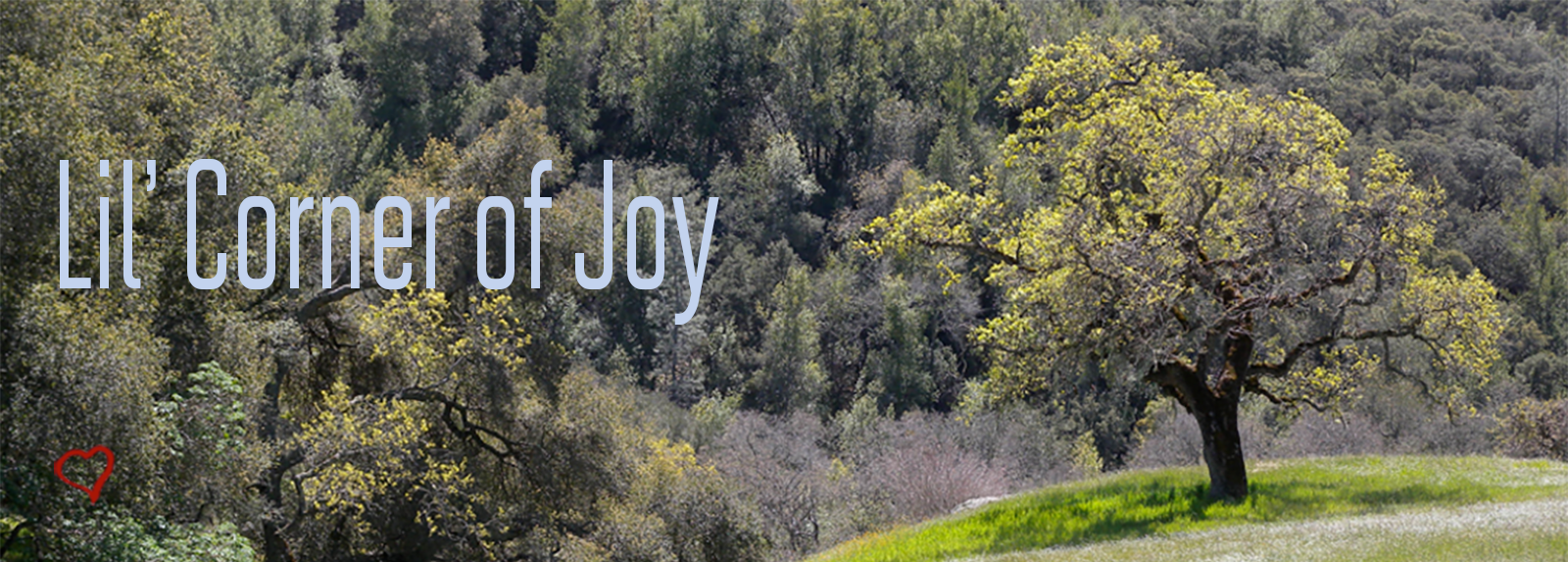Frost covered our dining table this cold, clear Sunday morning. Our heater died on Friday and will only get fixed on Tuesday, and meanwhile it was nearly as cold indoors as outside. Wearing a thermal shirt and two jackets, I turned on two space heaters near my chair and hoped that some form of warmth will infiltrate the frigid house.
I had meant to go for a morning walk with my friend Rebecca, but I was cold and reluctant to move from the cozy-potential of the space heaters. Finally, however, after I convinced myself that I’d feel so much happier after a walk, I called Rebecca. Our hike led through a woody trail up a hill. Rebecca’s dogs rushed back and forth, sniffing for jackrabbits and deer and news from other dogs. Oaks glowed green in the sunshine, olive-colored fern falling off their branches like snow. A madrone gleamed red and green in the shifting shade. Crossing a ravine, my morning crankiness disappeared into the brown, fertile soil and the whispering forest, and my day became full of the joyful promise of living trees.
Later, Dar and I went to the farmers’ market and enjoyed the abundance of fresh vegetables, roots, and leaves in the stalls. Two women sold freshly-baked gluten-free and dairy-free muffins and cookies and gave us a taste of Guatemalan coffee with coconut creamer. We had lunch at an Ethiopian restaurant where the waiter showed us a youtube video of how they make traditional teff bread. We drank sweet spicy tea and tore pieces of the soft, fluffy bread, dipping it in yellow lentil and brown beef stews.
At home I cleaned the chicken coop, replacing the wood chips with clean ones, and gave the chickens some of the leaves we bought at the farmers’ market. They were overjoyed, pecking at the leaves with abandon. Still energetic, I took my three dogs for a walk through the trails near my house where we met two deer crossing a meadow and some bicyclists shooting, wheels squealing with the effort to keep pace, up the road. The sun began to dip below the hills, and cool air wove its tendrils around me, reminding me that it is nearly wintertime, and that the heater at the house still doesn’t work.
As we walked down the driveway, a flock of migrating birds flew by through the clear blue sky. The dogs, panting and excited to be home, rushed ahead to the door. I looked at the red roof of my home and knew that this was the only place I wanted to be. There’s no place like home.
Now here I sit, wearing thick flannel pajamas and a jacket, as close to the heater as I can. Dar sits next to me, reading a book about stamps. The dishwasher is churning the dirt off of our dinner dishes. The chickens have already retreated into their coop, and the dogs have fallen asleep on their bed. It is dark outside, and for this moment in time, all is well in my world.
How was your Sunday?




